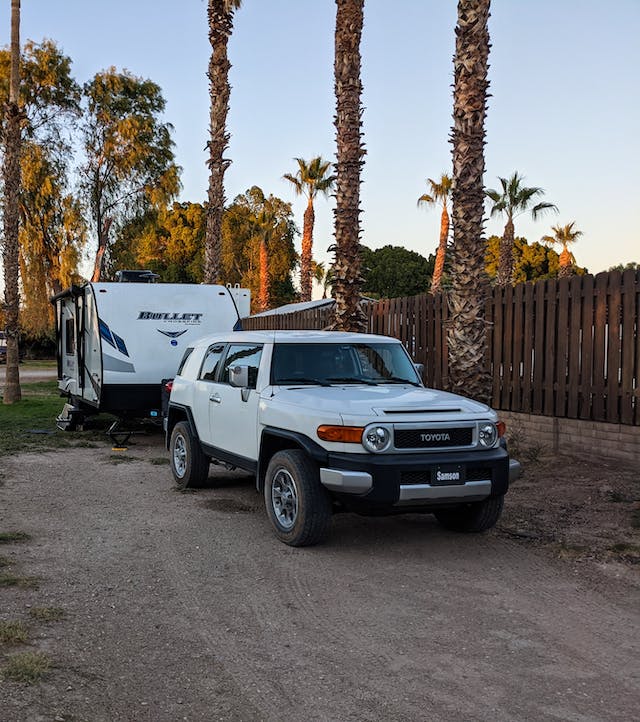RVs are known today as luxury homes on wheels. Some are even complete with master bedrooms and Jacuzzis. But going back in time, RVing began with the invention of the car and die-hard campers. The adventurers at heart were always in search of opportunities to grow and discover. The very first adventurers used to ship, horses, and trains until motorized vehicles were invented which led to the creation of RV’s we have today.
In fact, RV’s have become an integral part of the American culture and they’ve been enabling people to travel the country in luxury for more than 100 years. The original idea for RV’s was from the covered wagons used in Europe back in the 1800s by gypsies and caravans which moved from one place to another.
1910 to 1920
The very first motor home that was noted in North America was documented in Canada in 1910. It was built using a 3 ton Packard truck. It was 28 feet long and 6 and a half feet wide. Around 11 people could sleep in it. It had an icebox, a toilet, and a salon. This motor type of home was used up to 1924.
To improve and develop motor homes, campers continued to find more creative ways to adapt cars to their lifestyles. They began using woods and tents. RV’s during this time had kitchenettes, refrigerators, showers, baths, and other features. There are also some which were hooked up with telegraphs and electric lights.
In 1915, the house car named Gypsy Van was built. It had an interior like an English manor house and it weighed 8 tons. The first wheel camping trailer was then invented in 1917.
1921 to 1930
There were many pioneers in the RV industry such as Winnebago, Airstream, and the most common car up to the ’20s was Ford. From the framework of the Ford Model TT, the nomad house car was built in 1923. In 1927, a customized RV with the framework of a Brockway model H bus was built by Leonard S. Whittier. It contains wicker chairs, bookcases, a refrigerator, a sink, an electric stove, and even a septic tank. RV’s were made available for commercial purchase in the 1930s.
1931 to 1940
In this decade, manufacturers began making travel trailers, some were small and some were huge. In 1936, Glen Curtis, an aircraft designer made the Curtis Aerocar. In the same year, Airstream Trailer Co manufactured the clipper with a riveted aluminum which resembled an airplane. Four people can sleep in it and it also carried a supply of water. Airstream’s units were the very first self-contained trailers designed for travel made available on the market.
1941 to 1950
The growth of RV’s halted during World War II because they were needed for other purposes such as for hospitals, morgues, and prisoner transports in support of the war efforts. Their production for general purchase was stopped.
After the second world war, manufacturers started again to create innovative house cars which changed the future of RVing almost instantly. The legendary producer, Howard Hughes, had 8 RV’s built which were used as mobile dressing rooms. These RV’s had mahogany interiors, bathrooms, refrigerators, stoves, and air conditioners.
The US military purchased thousands of the Palace Expando in 1942. It is a revolutionary trailer which was expanded on both sides and had a shower and bath. The newly enlisted men in the military, together with their families, were housed in these trailers.
A fascinating home was built on the framework of a Chevrolet in 1946. Based on historic resources, the owner of this RV was always stopped by curious people whenever they go on vacation.
It was also during this time when the Shore Land Tandem Town and Country was built. It was a 30-foot-long trailer with 3 rooms and electric fixtures.
1951 to 1960
During the ’50s, RV’s bloomed and by the end of the decade, mobile homes and travel trailers were embedded in the camper lifestyle. They expanded in size and length and more luxury décor and modern conveniences like plumbing and bathrooms, as well as kitchens, were added. There were also models with second floors and terrace, and some have separate private bedrooms.
In 1952, the executive flagship of RV’s was built. It was 65 feet long, it weighed 18 tons, and it had 10 wheels. It had two bathrooms, wall to wall carpeting, a 21-inch television, and a portable pool with a diving board. It was sold for $75,000.
In 1955, an ingenious 2 story RV design was made. It has two floors with 3 bedrooms. It can accommodate 8 people. The first pop up truck was made in 1958 and after five years, the production of this unit began. In 1959, Shasta entered the RV industry and it soon became the most popular travel trailer of the era.
The RV lifestyle had endured a lot of events, through war and peace, booms and busts, fuel lines, fads, and as well as the cyber revolution. But in all of these, it is still going strong, even until now in the challenging economic times. From the 1960s to the present time, the RV industry continues to change and match the advancing technologies. As our technology continues to improve, more comforts of home will surely be added into RVs such as great options for showers, baths, and more.
Today, because of the comfort given by RVing, people no longer have to worry about camping and spending the night outside their homes. All they have to think about is finding and travelling to new and fun locations.

